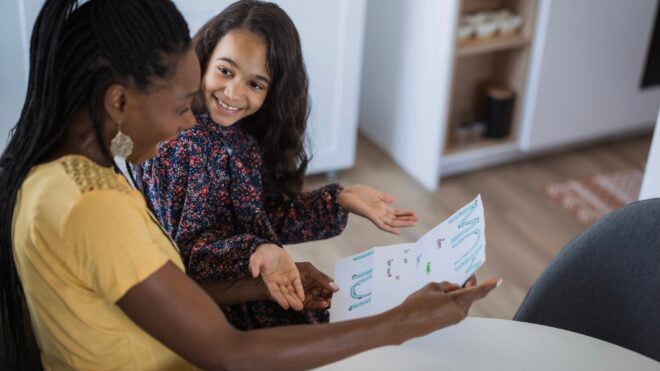
In this article:
More than ever, it is imperative that Americans learn the rich and un-whitewashed history of our country. Just as Black history is American history, so are the histories and contributions of Asian Pacific Islander and Desi Americans (APIDA). And while the specially set aside months like Asian American and Pacific Islander (AAPI) Heritage month are useful as a starting point, they do not justify ignoring the histories and contributions of non-white Americans the rest of the year.
What is AAPI Heritage Month?

May is AAPI Heritage Month where we honor the contributions and achievements of Asians and Pacific Islanders in the U.S. Whatever the space — whether it’s activism, art, literature, food, fashion, sports, entertainment, business, or anything at all — which we not only want to acknowledge, we wish to celebrate.
Originally passed by Congress and signed into law in 1978 for an AAPI week, it was eventually expanded to include the full month in 1992. May was chosen to commemorate the immigration of 14-year-old boy Manjiro — the first Japanese to the U.S. (May 7, 1843) — as well as to remember the anniversary of the completion of the transcontinental railroad (May 10, 1869), wherein approximately 20,000 railroad workers were Chinese immigrants.
Why it's important to recognize AAPI month

Since March 2020, anti-Asian violence in the U.S. (and globally) has spiked due to the pandemic induced lockdowns and quarantine. Fueled by racism and xenophobia, and stoked by leaders and government officials, anti-Asian hate crimes in 16 of the most populous U.S. cities during 2020 have increased 149% over 2019. Racist attacks on Asians — targeting the elderly and most vulnerable — have left many Asian Americans scared and on guard.
The current anti-Asian clime doesn’t come from nothing.
AAPI history is American history
As Maya Angelou said, “If you don’t know where you’ve come from, you don’t know where you’re going.” Unfortunately, for the majority of Americans — Asian/Pacific or otherwise — there is an appalling ignorance about Asian and Pacific Islander history in the U.S. As a result, we are all easily used as pawns against each other — especially when white supremacy pits APIDAs against other minority populations.
“There’s been a false narrative going around, especially in the face of anti-Asian racism in the past year that Asian Americans haven’t spoken up and protested against injustice,” homeschooling mom Meita A. told Mom.com. “We have. You just chose to silence and ignore us by not learning our history.”
For Asian American father of three R. Scott Okamoto, his kids became activist-minded early on — around 8 and 6 years old. “We wanted them to know what racism was from early on, and we wanted them to be proud of their heritage,” the writer and musician told Mom.com. “We figured the kids were going to face racism in school… So we wanted to get ahead of it and teach them some hard truth at home before they experienced it in school.”
Anti-Asian racism throughout history
When so many people equate Asians with foreignness, it’s important to learn that the first documented Asians in the Americas arrived in 1587 — yes, 1587 — when Filipinos landed near Morro Bay, Calif. on a Spanish galleon 33 years before the first Pilgrims arrived at Plymouth Rock. The first Chinese immigrants arrived in Hawaii — which was full of Native Hawaiians — around 200 years later, and continued until the Chinese Exclusion Act of 1882, still the first and only law passed (and enforced) to ban all people of a specific ethnic or national group from immigrating to the U.S.
Anti-Asian scapegoating — often equated with Sinophobia — has always existed in America. “Learn about our immigration to the United States. Start with the Chinese Exclusion Act and read up on all of the massacres and riots that happened in the 1800’s,” Korean American transracial adoptee Noah Conk wrote in an Instagram post.
“We as Asian people need to also decolonize ourselves and stop striving for whiteness — especially learning about Ourstory and the model minority myth,” continued UX designer Conk. “We need to also understand and decolonize our anti-blackness.”
Note: Ourstory is a purposeful term some people use in order to connote the difference between “HIStory” — the stories by men and colonizers and conquerors — and the real stories about our society and of the past.
Teach about cultural appropriation
AAPI Heritage Month is one small way folks can resist the whitewashing of Asian cultures — like when white owned coffee shops bully Asians when they point out the Vietnamese coffee they’re selling is not Vietnamese coffee (like Bob Sinnot of Toasted Coffee) or how yoga — a practice founded in ancient India — became synonymous with skinny white women.
How to celebrate AAPI Heritage Month

AAPI Heritage Month will have to be celebrated differently in 2021 due to the pandemic and social distancing. Although there are usually many community festivals and sponsored events, some will have limited capacity or may have portions of their celebrations held virtually. Check with your local city organizations for events and safety guidelines.
However, one important way we can all honor the millions of APIDAs and their contributions is to learn — and unlearn — along with our kids as much as we can about AAPI history.
“AAPI is more than Chinese, Corean, Japanese, etc. There are 45 other countries,” Conk told Mom.com. “We need to build bridges and recognize the most marginalized within our communities; the ones that don’t fit in an archaic colorist caste system, multiracial, transgender, and disabled.” Conk reminds us that we can use this month “… to indulge in Ourstory.”
Note: Many Korean scholars and politicians wish to change the spelling of “Korea” to “Corea” due to the Japanese changing from the original “C” spelling at the start of Japan’s occupation of Korea (from 1910 to 1945).




